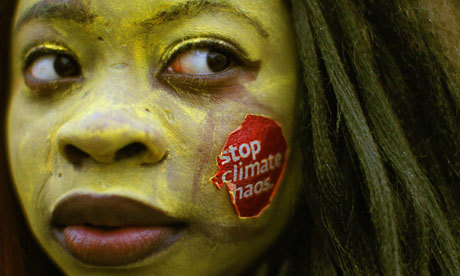You can be forgiven for not noticing that the United Nations’ Intergovernmental Panel on Climate Change released a summary of its Fifth Assessment Report late last month.
The report landed with a thud, criticized and even mocked by many leading climate scientists. The distinguished science journal Nature editorialized that this should be the last report issued by the UN body.
This is just the latest signal that the age of climate alarmism is over. Given five tries to convince the world that human activity is causing catastrophic warming of the planet, runaway sea-level rise and various weather disasters, the public still doesn’t buy it.
We’re all skeptics now because the science simply does not back up the hypothesis. For starters, there’s been no rise in global temperatures for 15 years.
The IPCC’s Fifth Assessment Report concedes for the first time that global temperatures have not risen since 1998, despite a 7 percent rise in carbon dioxide (CO2) emissions.
To put that into perspective, global human CO2 emissions in the last 15 years represent about one-third of all human CO2 emissions since the start of the Industrial Revolution, and yet temperatures didn’t budge.
Nearly all of the UN-approved climate computer models were wrong. The IPCC finally admitted as much.
The IPCC also admits that the “hockey stick” it used to feature in past reports wasn’t accurate. Penn State professor Michael Mann has been dining out for years on his infamous “hockey stick,” a dread graph featured by Al Gore in his Oscar-winning documentary “An Inconvenient Truth.”
The graph looked so dramatic — like a hockey stick — only because it ignored the Medieval Warm Period, a time about a thousand years ago when temperatures were warmer than today — when wine grapes grew in England and Greenland was green.
The “hockey stick” is missing from the Fifth Assessment Report, and the IPCC admits the Medieval Warm Period was warmer and more global than it claimed in the past.
A third major admission by the IPCC: No increases in droughts, hurricanes, typhoons and other extreme weather. Every time severe weather hits the United States, you could count on IPCC-related scientists, professional climate alarmists and the media to attribute it all to man-made global warming. No more.
The latest IPCC report admits to having “low confidence” in predictions of more frequent or more extreme droughts and tropical cyclones.
While the IPCC is taking its lumps for being wrong on these and other matters, a new kid on the block of climate science is taking a victory lap: The Nongovernmental International Panel on Climate Change released its own report, Climate Change Reconsidered II: Physical Science. Packed with 1,000 pages of peer-reviewed literature — and then peer-reviewed again by NIPCC’s team of some 50 scientists from around the world — Climate Change Reconsidered II comes to the conclusions the United Nations is only now and reluctantly admitting.
The NIPCC report concludes that human impact on climate is very modest, especially when compared to natural cycles. Future warming due to human greenhouse gases is likely to be only 1-2 degrees Celsius, and be a boon for flora and fauna alike.
Higher levels of carbon dioxide will not cause weather to become more extreme, sea-level rise isn’t accelerating and polar ice caps aren’t melting at alarming rates.
Global warming isn’t the crisis many people said it was a few years ago. That’s bad news for the IPCC and the many environmental groups and politicians that hooked their wagon to it. But it’s good news for the rest of us.
[First published at The Washington Examiner.]





